The Algarve is the southernmost region of Portugal, bordered by the ocean on two sides with over 200km of stunning sea cliffs and sun kissed beaches.
The capital of the region is Faro – the country’s most-southern city. For the Romans, Faro was an invaluable gateway to the Atlantic and the old town sits on the original footprint of their walled city. The Moors occupied Faro from the 8th century, until King Alfono III took the city in 1249 and the Algarve became the southern-most border of the kingdom of Portugal.
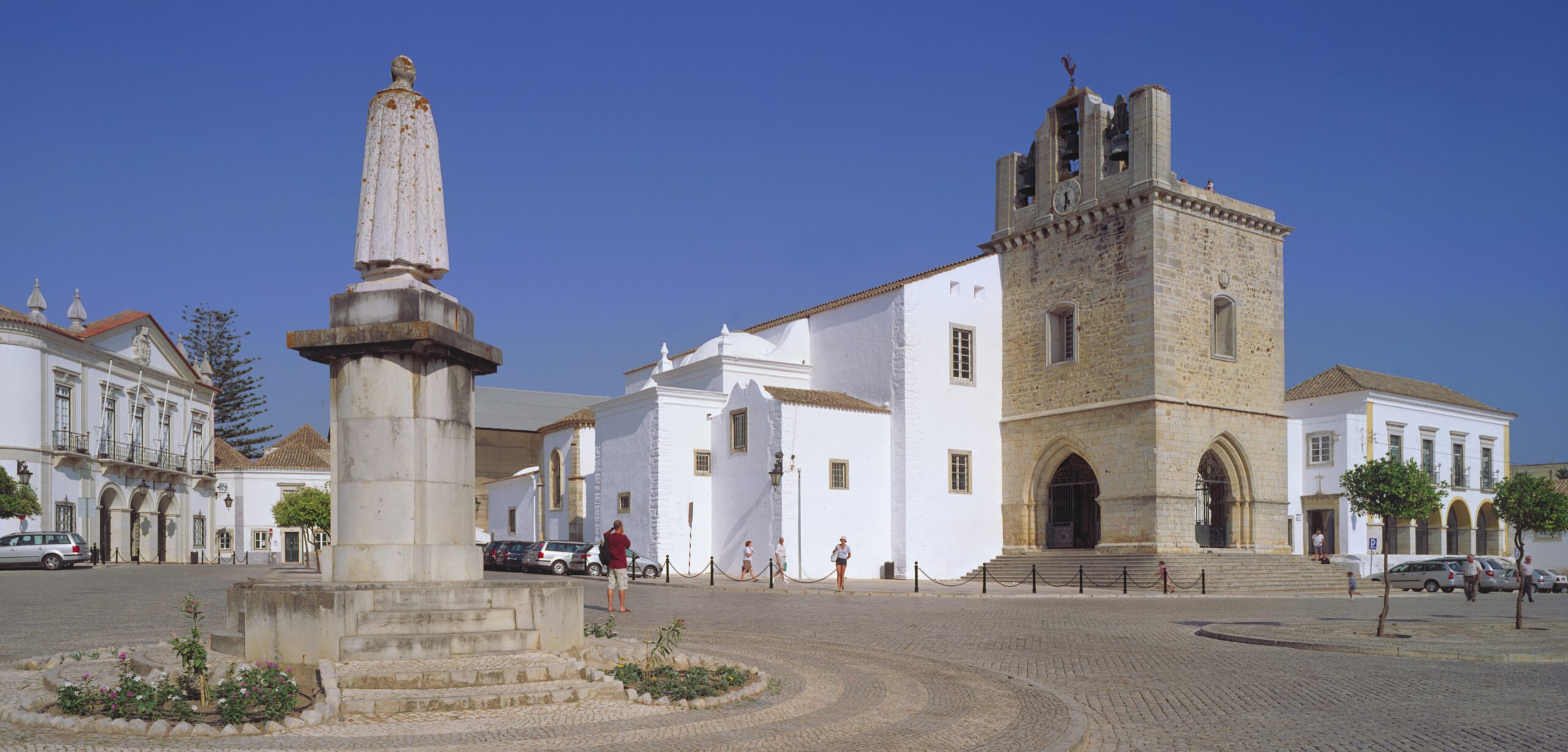 The Se Cathedral dates back to this period and the nearby Museu de Faro charts the city’s long history, from 3rd century mosaics to the 20th century works of futurist painter of Carlos Porfirio. It’s also a delightful building in its own right, with its shaded cloisters and unusual gargoyles. The Jardim Manuela Bivar plaza is the dividing line between old and new Faro, leading you into the thoroughly-modern shopping district with the Doca de Faro marina close by. The city’s best restaurants and café bars are concentrated to the north of the plaza, in and around the Rua Conselheiro Bivar and it’s narrow, cobbled tributaries.
The Se Cathedral dates back to this period and the nearby Museu de Faro charts the city’s long history, from 3rd century mosaics to the 20th century works of futurist painter of Carlos Porfirio. It’s also a delightful building in its own right, with its shaded cloisters and unusual gargoyles. The Jardim Manuela Bivar plaza is the dividing line between old and new Faro, leading you into the thoroughly-modern shopping district with the Doca de Faro marina close by. The city’s best restaurants and café bars are concentrated to the north of the plaza, in and around the Rua Conselheiro Bivar and it’s narrow, cobbled tributaries.
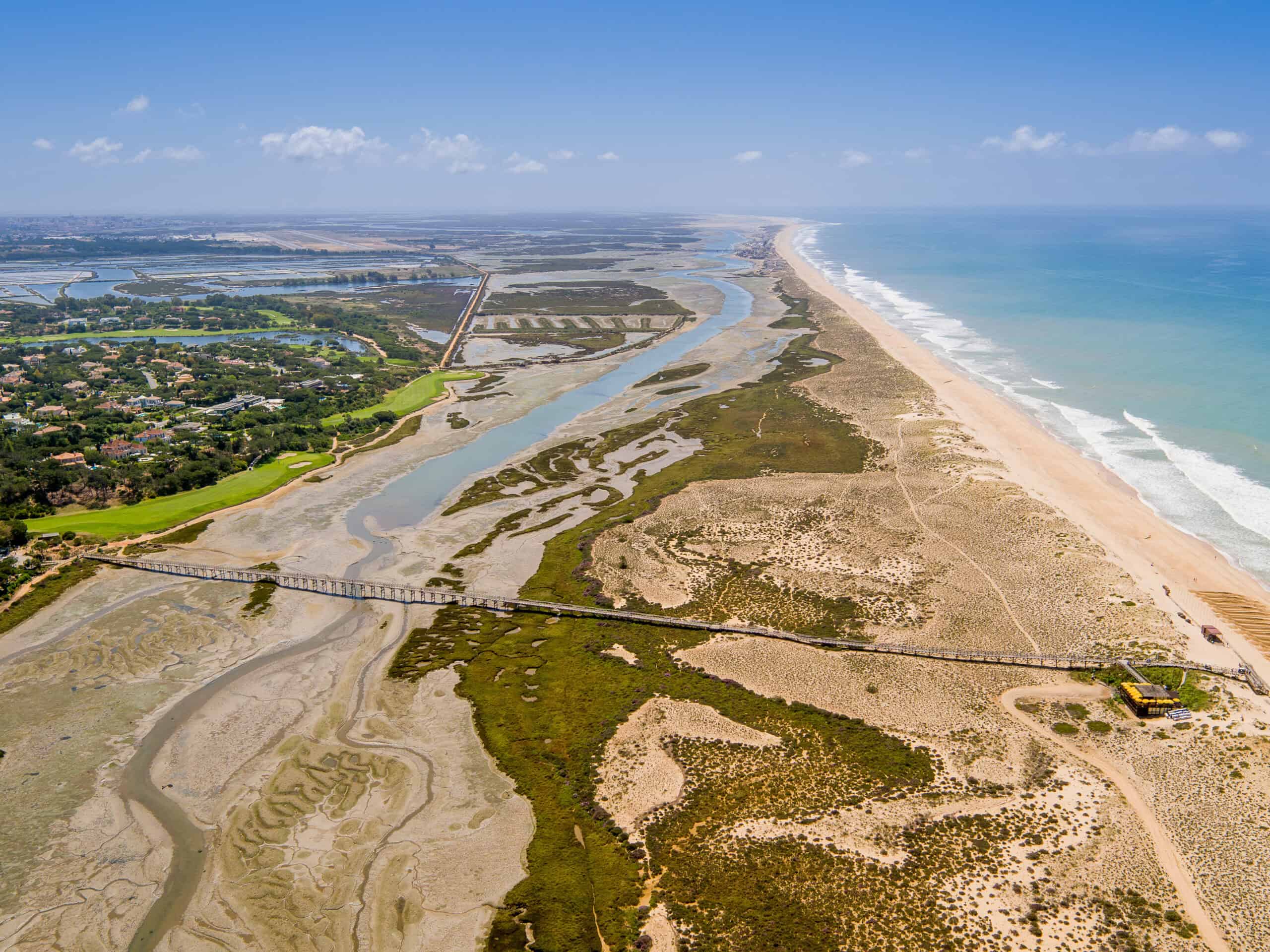 For nature lovers, the protected Parque Natural da Ria Formosa extends across most of Faro’s coastline. It’s a complex collection of lagoons, tidal flats and sandbar islands, and the calm seas are a haven for aquatic birdlife: flamingos, storks, ospreys and the purple swamphen. Within the lagoon, the Ilha da Culatra is popular for its white beaches and laid-back pace of life. Its resident fisherman are famous for their Cao de Aguas – Portuguese water dogs, which are used to herd fish into nets. Neighbouring Ilha da Armona is where the sunseekers head for, with its 9km-long beach and pop-up restaurants.
For nature lovers, the protected Parque Natural da Ria Formosa extends across most of Faro’s coastline. It’s a complex collection of lagoons, tidal flats and sandbar islands, and the calm seas are a haven for aquatic birdlife: flamingos, storks, ospreys and the purple swamphen. Within the lagoon, the Ilha da Culatra is popular for its white beaches and laid-back pace of life. Its resident fisherman are famous for their Cao de Aguas – Portuguese water dogs, which are used to herd fish into nets. Neighbouring Ilha da Armona is where the sunseekers head for, with its 9km-long beach and pop-up restaurants.
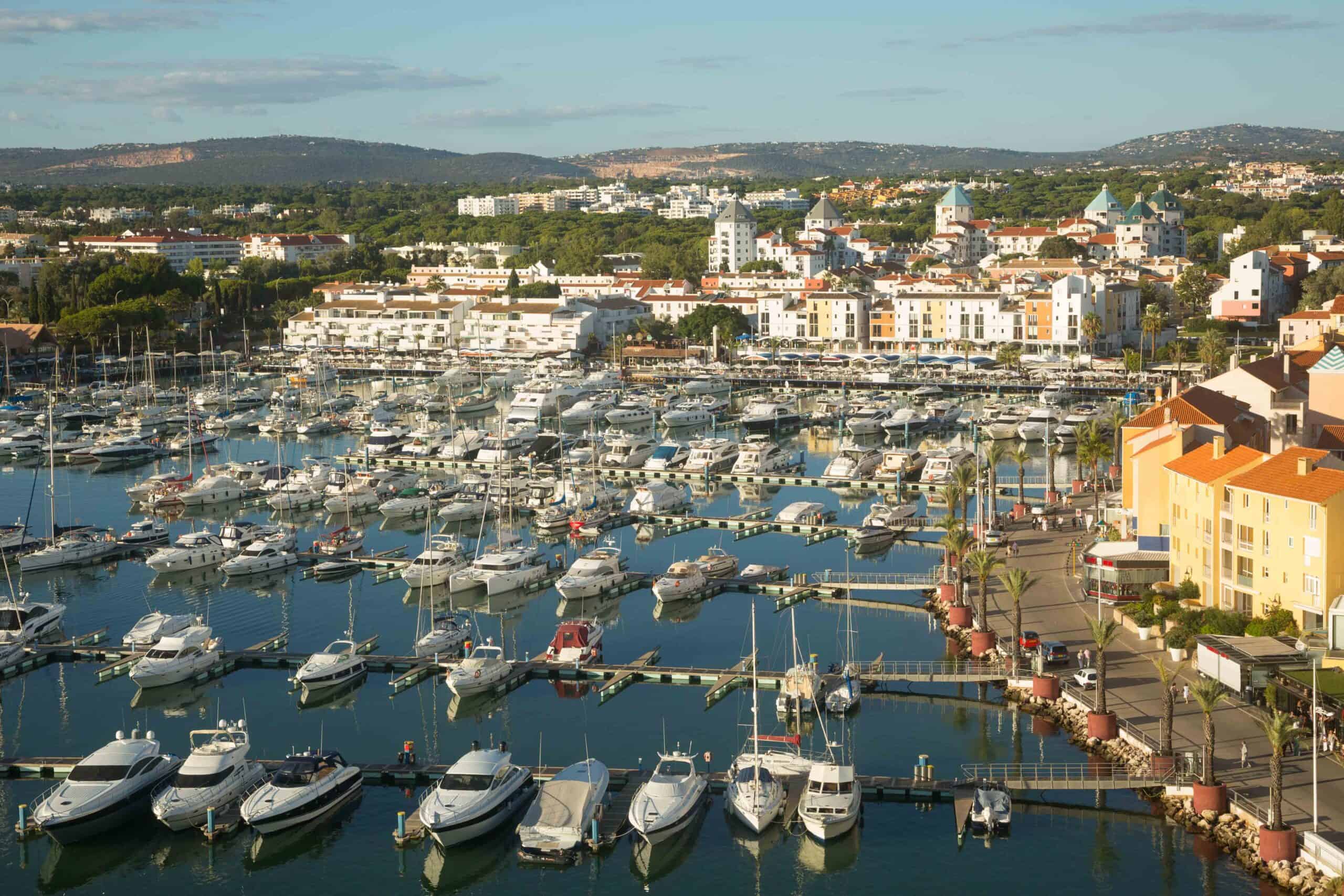 Heading west, the big four resort towns of the Algarve are Vilamoura, Albufeira, Praia da Rocha and Lagos. These are the well-known tourist hotspots with the most popular beaches – Albufeira and Praia da Rocha tend to draw a younger crowd thanks to their holiday resorts, water parks and busy nightlife, whilst Vilamoura, with its 1980’s stylings, is one of Portugal’s premier golfing destinations.
Heading west, the big four resort towns of the Algarve are Vilamoura, Albufeira, Praia da Rocha and Lagos. These are the well-known tourist hotspots with the most popular beaches – Albufeira and Praia da Rocha tend to draw a younger crowd thanks to their holiday resorts, water parks and busy nightlife, whilst Vilamoura, with its 1980’s stylings, is one of Portugal’s premier golfing destinations.
Lagos manages to strike a balance between modern-day tourism and protecting its heritage better than most. Its historic old town is a complicated maze of traditional whitewashed townhouses and ornate churches, harking back to both a golden era when Lagos was the maritime HQ for the Age of Discoveries, and a dark period when the town was at the centre of the European slave trade. The city was the original capital of the Algarve, until the great earthquake of 1755 devastated the city and Faro became the new centre of power. Lagos’ 4km beach at Meia Praia is popular with families, and for the more adventurous the secluded beaches at Praia Dona Ana and Praia do Camilo are worth the extra effort. The famous limestone cliffs at Ponta da Piedade can be explored on foot or by boat – the latter is recommended, to really get the best views of Piedade’s sea stacks, hidden caves and archways.
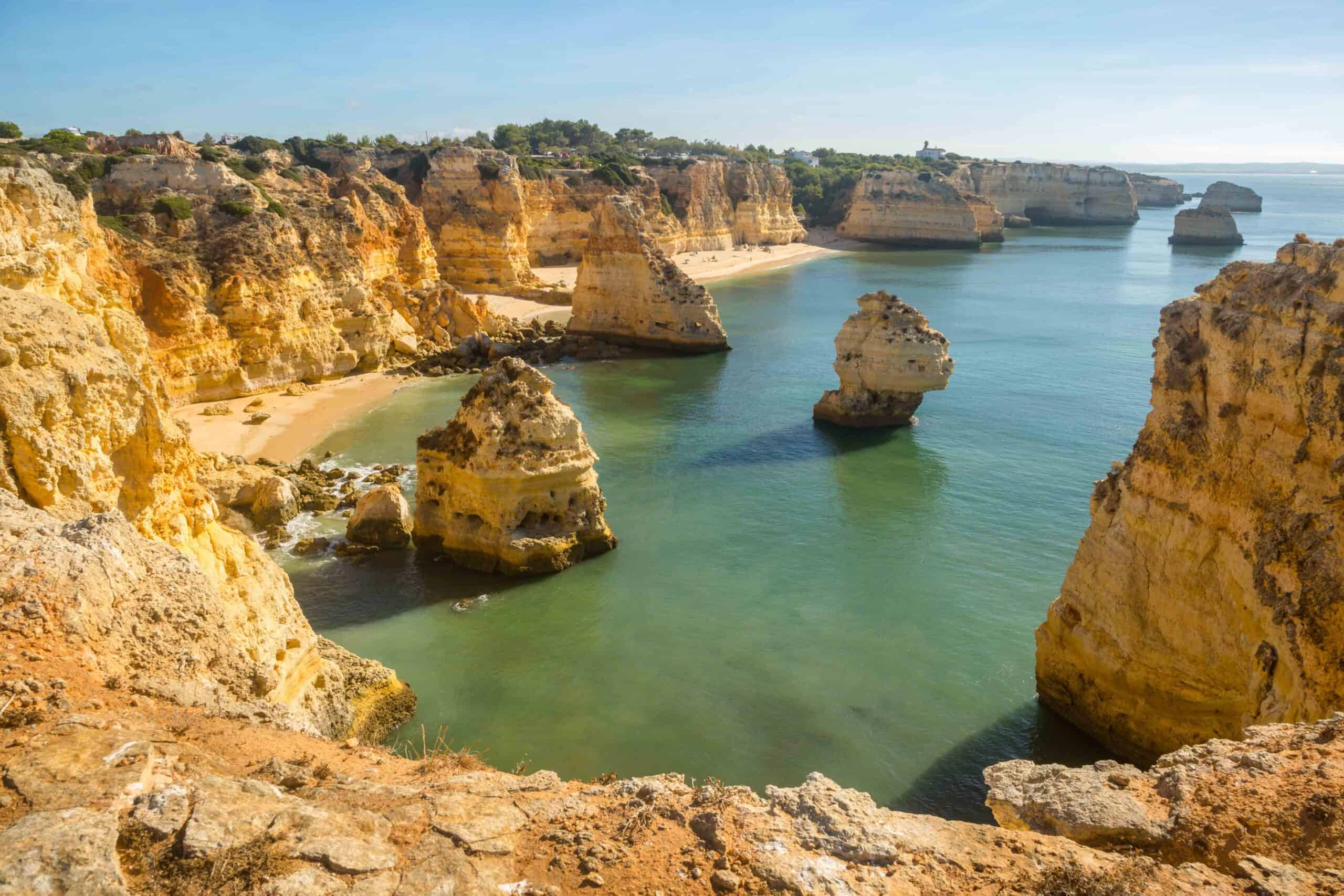
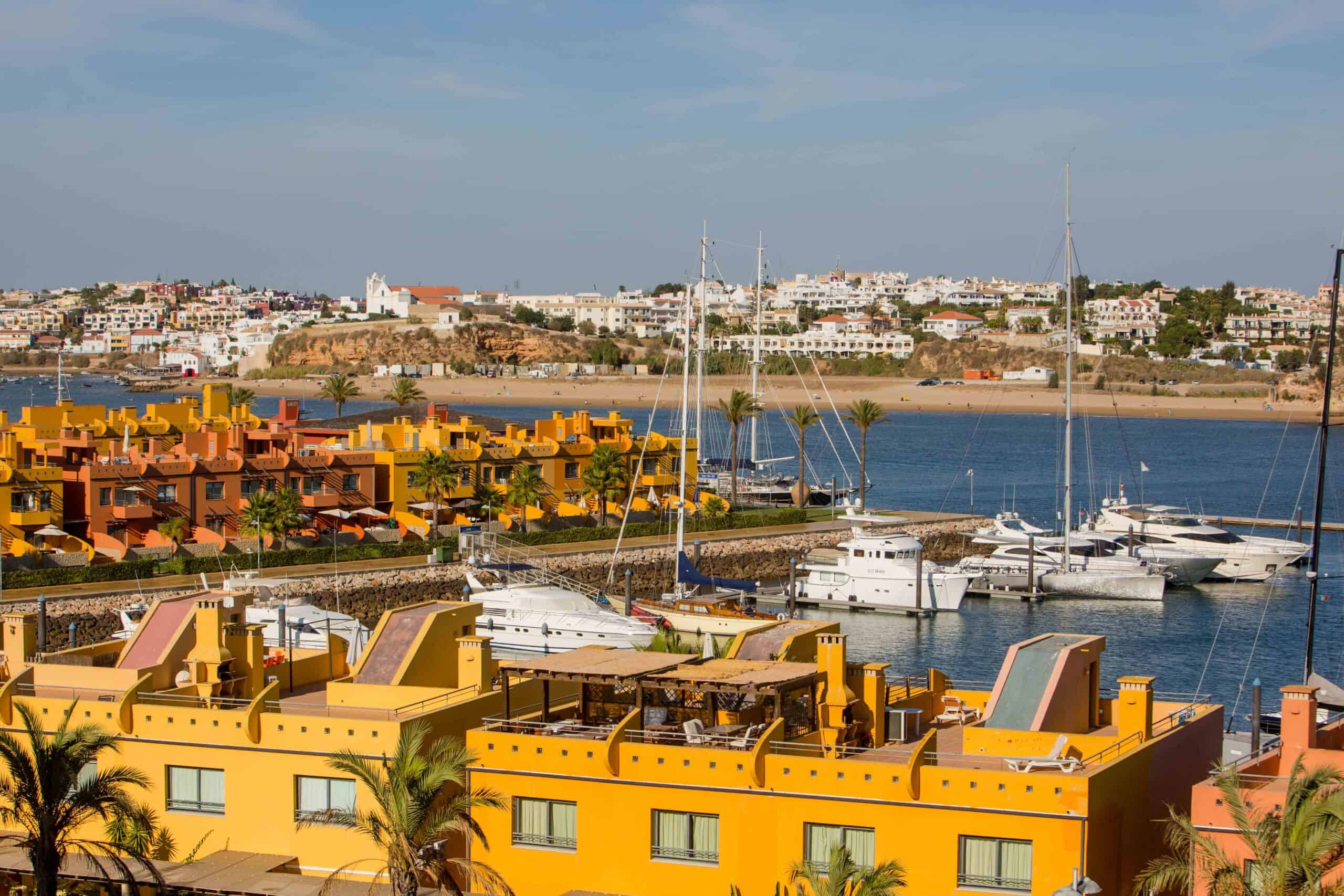 Away from the resort towns, Portimao sits on the Ribeira Arade estuary and is popular for its sport fishing, sailing, windsurfing and dolphin watching. Its Museu de Portimao traces the history of the Algarve over five centuries – from the neolithic period, through the Roman and Islamic occupations, to the Estada Nova. Portimao was once the bustling heart of the Algarve fishing industry, and it’s still one of the best places to sample seasonal Algarve produce. The neighbouring hilltop town of Lagoa has some wonderful examples of 18th century Portuguese architecture – particularly the Igreja de Nossa Senhora da Luz and the Convento de Sao Jose, which is modern-day Lagoa’s cultural centre.
Away from the resort towns, Portimao sits on the Ribeira Arade estuary and is popular for its sport fishing, sailing, windsurfing and dolphin watching. Its Museu de Portimao traces the history of the Algarve over five centuries – from the neolithic period, through the Roman and Islamic occupations, to the Estada Nova. Portimao was once the bustling heart of the Algarve fishing industry, and it’s still one of the best places to sample seasonal Algarve produce. The neighbouring hilltop town of Lagoa has some wonderful examples of 18th century Portuguese architecture – particularly the Igreja de Nossa Senhora da Luz and the Convento de Sao Jose, which is modern-day Lagoa’s cultural centre.
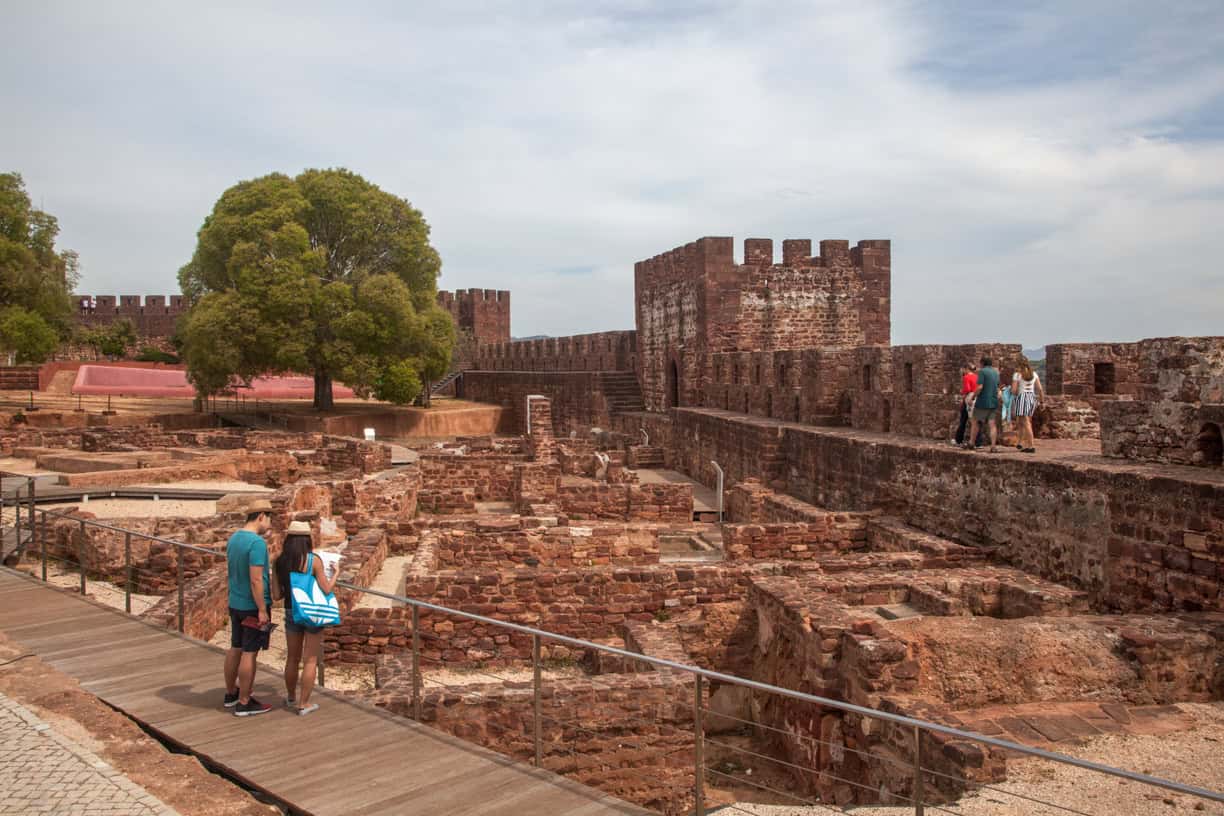
To the north, Silves is often overlooked by visitors to the region. Its 8th century sandstone castle is one of the best-preserved examples of a Moorish architecture in Portugal – August’s Medieval Festival is centred around the castle, with historical re-enactments, processions, acrobats, jesters and jousting, and it attracts over 130,000 visitors. Silves’ oldest structure is the Ponte Romana which bridges the Rio Arade – heading downriver brings you through the old fishing villages of Farragudo and Carvoeiro, where it’s often difficult to judge where the town ends at the white-sand beaches begin. One of the region’s most-impressive geological monuments is in Cavoeiro: the Algar de Benagil sea cave is limestone cathedral, carved out by the ocean. A hole in the roof of the cave acts as a natural skylight, beaming down onto the secluded beach within – the entrance to the cave is by kayak or boat.
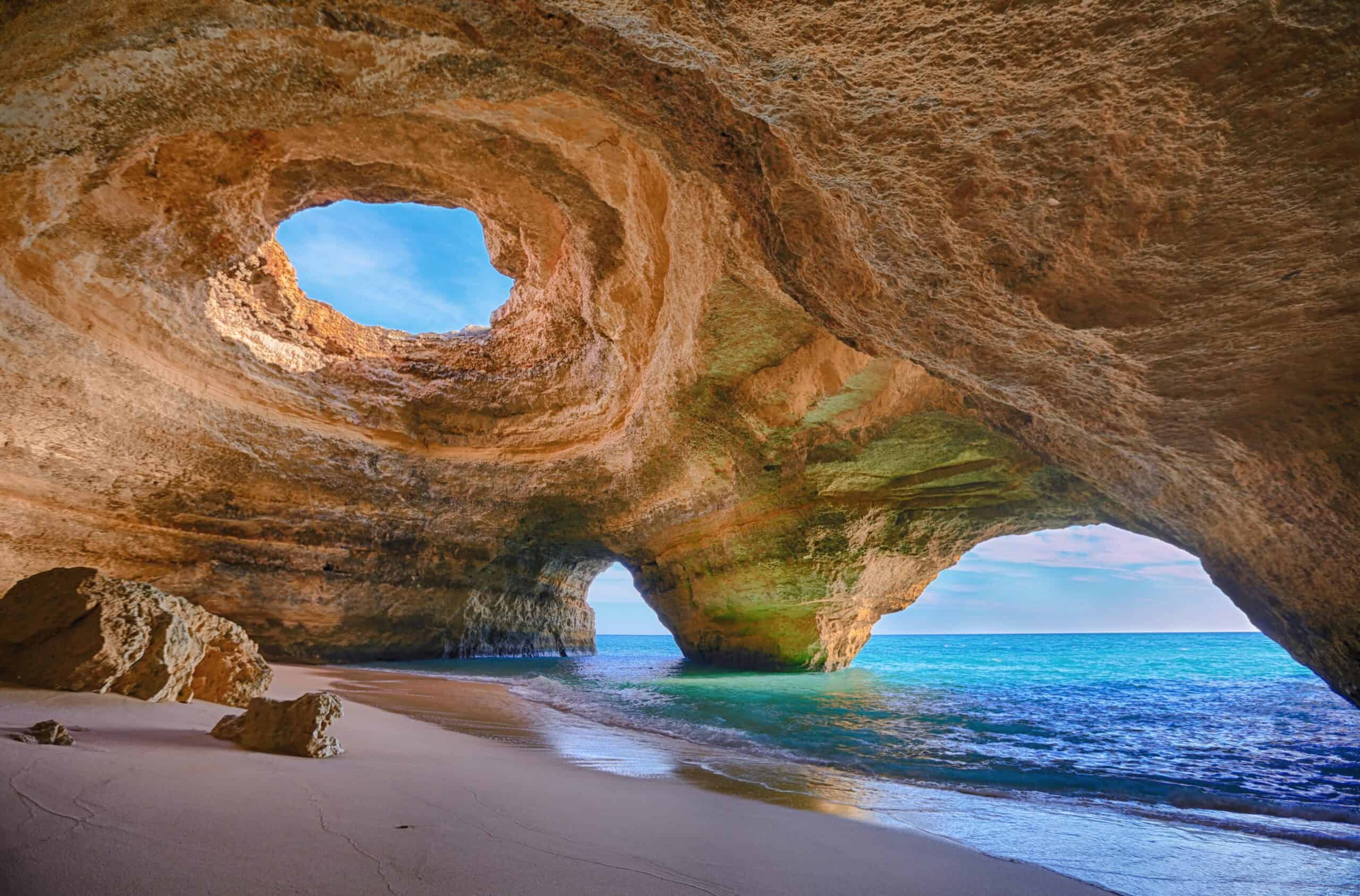
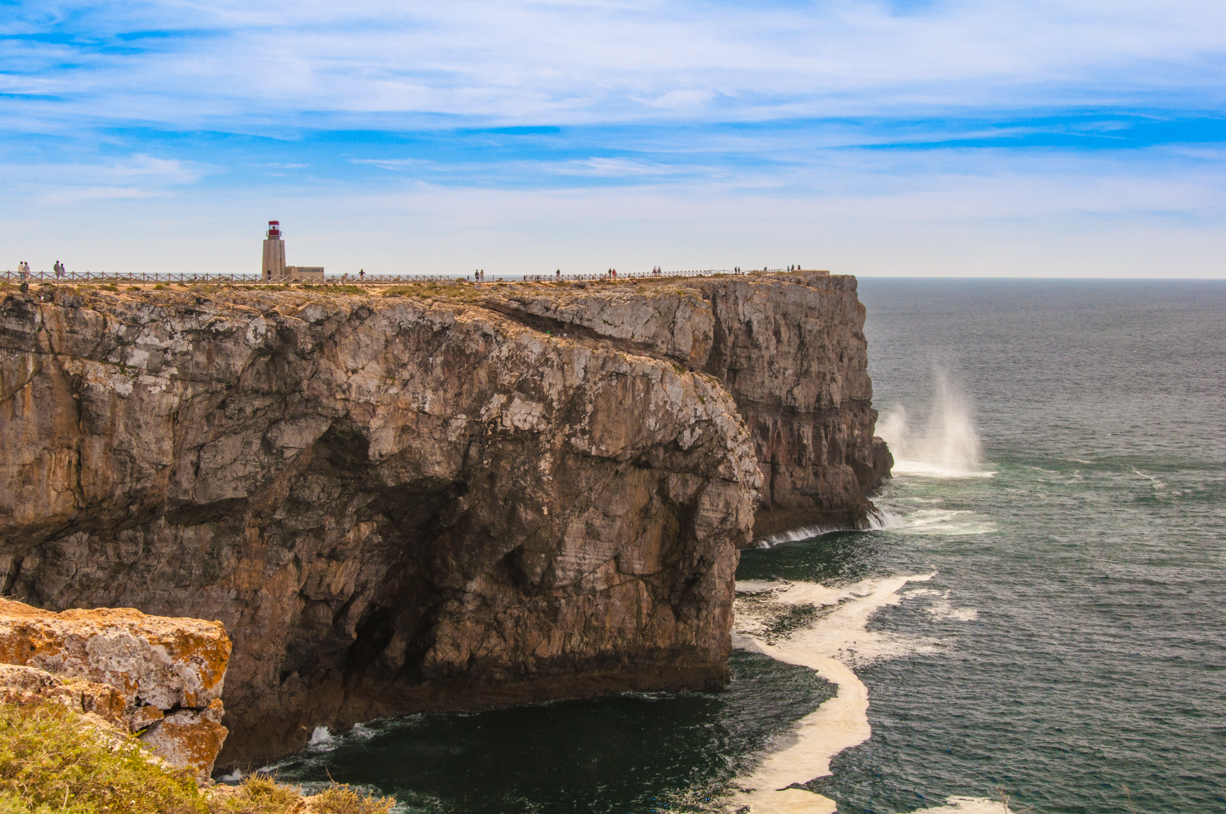
The town of Sagres sits at the southwestern tip of Portugal, and as with Lagos, there’s a tentative balance trying to be struck between beach tourism and maritime heritage. There’s more of a ramshackle, surfer-atmosphere to Sagres, and the posh yachts of Vilamoura haven’t supplanted the locals’ brightly painted lobster boats just yet. The 15th century Fortaleza de Sagres is perched on the nearby Mareta headland – it’s hard to believe the tsunami from the 1755 earthquake managed to inflict damage to a fort that’s 60m above the ocean. On the ground, the Rosa dos Ventos ‘Rose of the winds’ was only rediscovered in 1919, having been buried by the relentless westerlies. This circular, stone-paved compass measures 43m in diameter – it could also be a sundial; it’s purpose is still subject to speculation. Nearby Cabo de Sao Vicente truly feels like the end of the world – or the end of mainland Europe anyway – and its lighthouse has acted as a navigation beacon for Portuguese sailors for generations. From here to Pontal da Carrapatiera and beyond, you’ll find a series of secluded beaches which only locals and surfers tend to frequent.
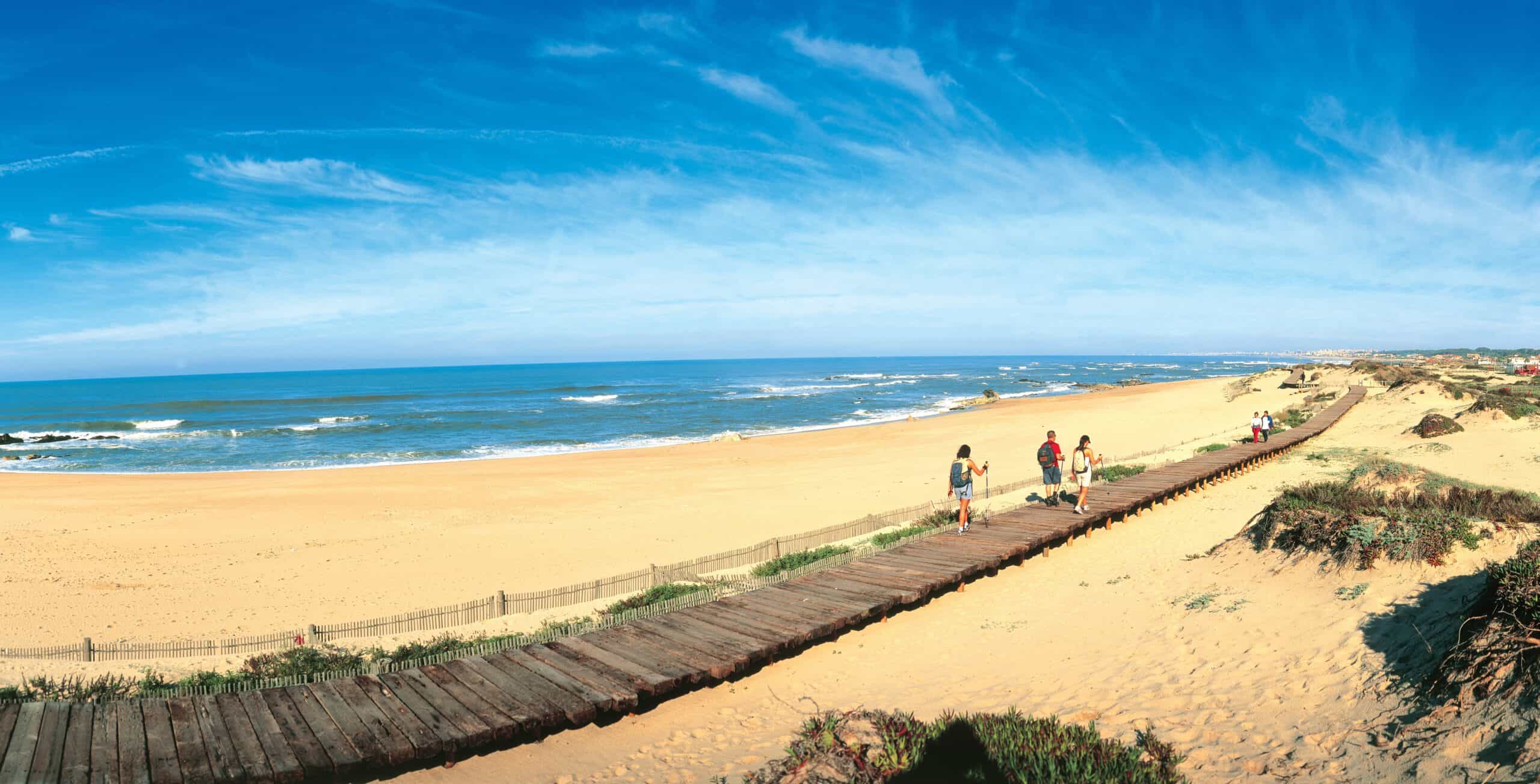 The coastal walks of the Algarve are some of the best in Portugal – the popular Rota Vicentina trail network begins in the neighbouring region of Alentejo, and extends right across the Algarve from Sagres to Faro. First-time hikers are often surprised by the terrain inland – an undulating landscape of rolling countryside dotted with rustic farms, orange groves and almond trees. The Serra de Monchique mountain range is criss-crossed with old farm tracks and trails, peaking at 902m at the summit Mount Foia with its sweeping, panoramic view from Portimao to Sao Vicente. The town of Monchique is a world away from the beaches and bustle of Lagos and Albufeira, with its colourful architecture and quirky shops. The hot springs at Caldas de Monchique have been renowned for their healing properties since Roman times and are guaranteed to nursed life back into the legs of even the most dedicated hiker.
The coastal walks of the Algarve are some of the best in Portugal – the popular Rota Vicentina trail network begins in the neighbouring region of Alentejo, and extends right across the Algarve from Sagres to Faro. First-time hikers are often surprised by the terrain inland – an undulating landscape of rolling countryside dotted with rustic farms, orange groves and almond trees. The Serra de Monchique mountain range is criss-crossed with old farm tracks and trails, peaking at 902m at the summit Mount Foia with its sweeping, panoramic view from Portimao to Sao Vicente. The town of Monchique is a world away from the beaches and bustle of Lagos and Albufeira, with its colourful architecture and quirky shops. The hot springs at Caldas de Monchique have been renowned for their healing properties since Roman times and are guaranteed to nursed life back into the legs of even the most dedicated hiker.
Photos: AT Algarve








Follow us online